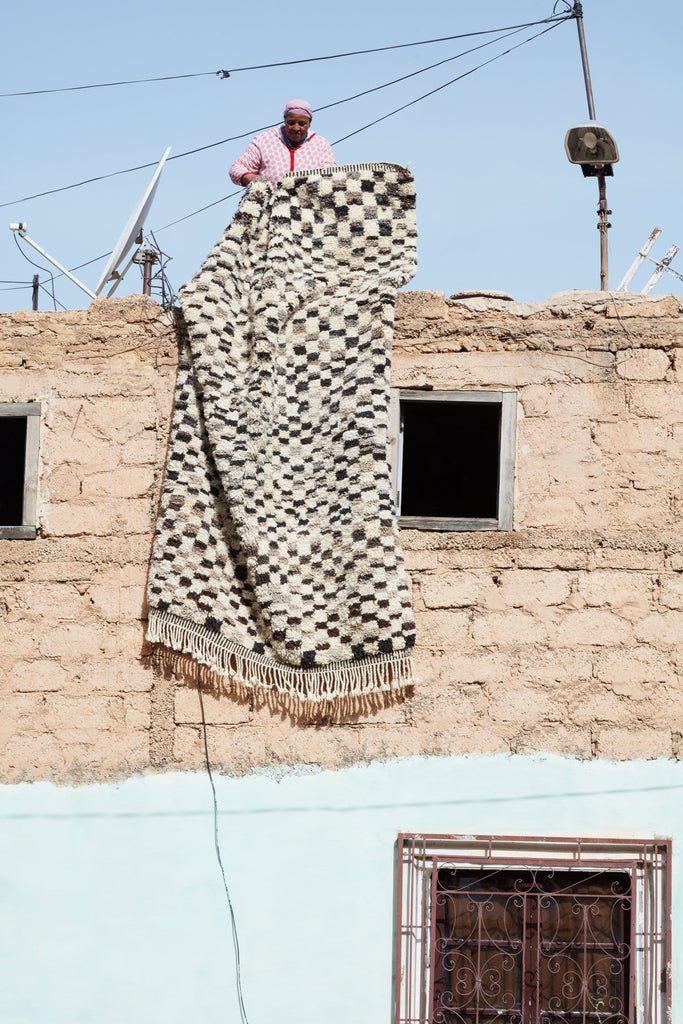
Tête-à-tête
Nicoletta Fasano on applying ancient techniques to new ideas
In Puglia, there is a small town of Grottaglie that has been known for centuries for its artisan ‘ceramica’ production. Pouring with rich history, it is a town full of happy artisans that welcome you to watch them at work as they interpret their own versions of the craft using techniques that has passed from generation to generation. Production can be divided in to distinct traditions, the Caposanara Ceramics which concentrates on the production of all kitchen utensils (plates, jugs, glasses) and the Faenzara Ceramics which include a series of precious objects that serve a more sophisticated and decorative purpose. In Nicoletta Fasano’s family there are 18 generations of ceramicists - the Fasano name is known for the quality of its creations and the skill of its masters. Embracing multiple styles their designs range from classic and traditional to modern and contemporary, often the two overlap, enabling them to reinvent themselves infinitely.
We spoke to Nicoletta about applying ancient techniques to new ideas.
With 18 generations of ceramicists that stretch back to the middle ages in the Fasano family, when do you feel the education begins?
From childhood. We breathe art all around.
My daughter and son both started using coloured pigments on pots and plates since they were babies using their free creativity.
In what way does your home of Grottaglie influence your work and creative expression?
In its millenary history, ceramic art has evolved: the quality of the raw material, the cooking methods, the artistic technique. However, in our company the essential rule of respecting the times of the earth still applies. In fact, the artefacts dry naturally, conditioned by the seasons, by the rate of humidity, by the winds. Another fundamental feature of our company is the wide range of ceramics produced, from the most classic to the contemporary ones, because it requires a deep knowledge of the past, of traditional decorations and ancient techniques to be able to evolve and invent something new. And this research happens continuously.
Without giving away any secrets, can you talk us through some of the age-old techniques you still use today, and how important to you is upholding these methods?
One of the most ancient technique we still use a lot, one that is most requested from all over the world - is the one to create ‘smarmoriato’ collection. Our employers continue using small twigs of trees to splash on plates, mugs, pitchers etc. We’ll never change this method and instruments: that’s the secret!





Please tell us the story behind the faces we see on your signature collection of ceramics?
Absorbed in ceramics since childhood my father, Franco Fasano (pictured) has experienced the evolution of styles and techniques, making them his own and re-elaborating them always with a view to the future. The faces collection was introduced to the market 10 years ago - more or less. My father was inspired by the troubled faces of the worldwide economic crisis in our sector, he used to call them ‘Volti sconvolti’. In the recent years he changed his mind and the faces are not so much troubled like before – now he is inspired by visitors who come and visit our factory from all around the world.
We breathe art all around.
Where do you draw your influences from, is it from traditional sources or further afield?
From both. Our employees learn the traditional methods and patterns at school, but we develop many other shapes and decorations with designers in Grottaglie to create new collections and styles.
How do you feel your brand has evolved over the years, and what do you see in the future?
People need to see where the ceramics are made - we welcome, tourists, architects, designers that need a direct experience by touching materials and colours. This is our main goal at the moment, to let people get close to clay and glazes, to appreciate the time and passion of our job that it take to complete one piece from the beginning.
What advice would you give the next generation of Fasano ceramicists?
As earlier, stay close to the materials and take inspiration from old methods to introduce new idea.
Lastly, Tigmi is Berber for ‘My Home’ what would you say is the quintessential Fasano piece for all homes?
Hard to say, we produce so many things! For sure plates or pot for plants are our main production. And as company we’re going ‘green’ I’ll suggest a beautiful green ramina pot for a basil plant for all the houses - balcony, terrace etc...

















